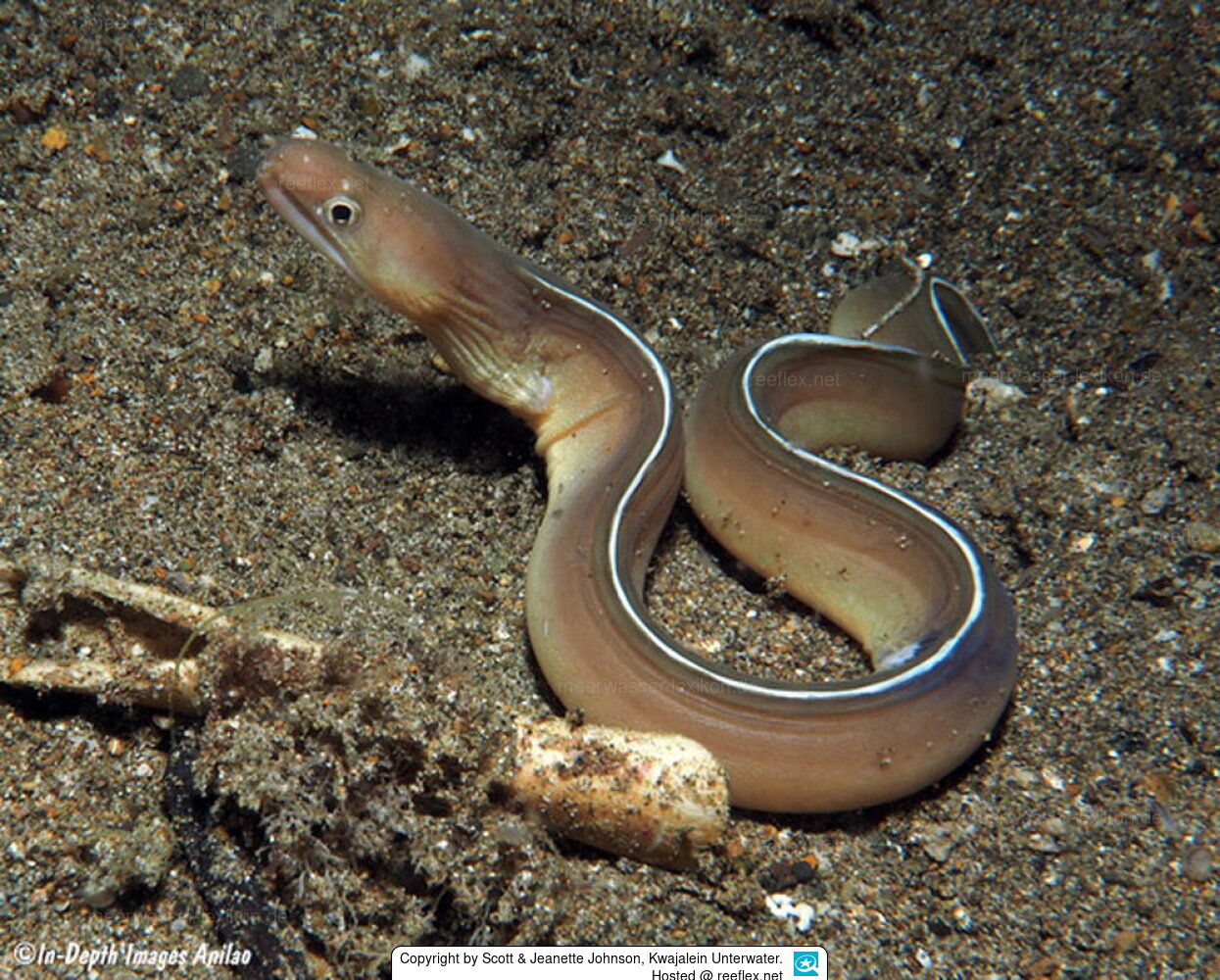Info
Gymnothorax phasmatodes (Smith, 1962)
Gymnothorax phasmatodes, the ghost moray, eel is found in the western Indian Ocean.
Be careful, when a moray eel bites, inflammation/infections can occur in the bite wound!
Feeding
Because of the food requirements (whole dead fish or whole dead shrimp or other pieces of food) and / or imitation of a live animal and / or the dangerousness of the fish / crustacean (bite or puncture injuries to the keeper) should be
The bite of a moray eel can also be fatal for humans, depending on the size and bite depth of the animals.
The penetration of the pointed teeth of a moray eel into the human skin is very painful in any case and a doctor should definitely be consulted, as the saliva of morays is poisonous and contains a variety of different bacteria. In any case, a doctor should look at the bite marks to treat or rule out possible blood poisoning
Please always feed moray eels with feeding tongs to avoid accidents, no matter if the animal(s) is/are trustworthy!
Attention: The fish may bite divers in their fingers.
Jumping guard
A jumping guard prevents (nocturnal) fish from jumping out.
Wrasses, blennies, hawkfishs and gobies jump out of an unprotected tank in fright if their night rest is disturbed, unfortunately these jumpers are found dried up in the morning on carpets, glass edges or later behind the tank.
https://www.korallenriff.de/en/article/1925_5_Jump_Protection_Solutions_for_Fish_in_the_Aquarium__5_Net_Covers.html
A small night light also helps, as it provides the fish with a means of orientation in the dark!
Synonymised names
Lycodontis phasmatodes Smith, 1962 · unaccepted
Gymnothorax phasmatodes, the ghost moray, eel is found in the western Indian Ocean.
Be careful, when a moray eel bites, inflammation/infections can occur in the bite wound!
Feeding
Because of the food requirements (whole dead fish or whole dead shrimp or other pieces of food) and / or imitation of a live animal and / or the dangerousness of the fish / crustacean (bite or puncture injuries to the keeper) should be
The bite of a moray eel can also be fatal for humans, depending on the size and bite depth of the animals.
The penetration of the pointed teeth of a moray eel into the human skin is very painful in any case and a doctor should definitely be consulted, as the saliva of morays is poisonous and contains a variety of different bacteria. In any case, a doctor should look at the bite marks to treat or rule out possible blood poisoning
Please always feed moray eels with feeding tongs to avoid accidents, no matter if the animal(s) is/are trustworthy!
Attention: The fish may bite divers in their fingers.
Jumping guard
A jumping guard prevents (nocturnal) fish from jumping out.
Wrasses, blennies, hawkfishs and gobies jump out of an unprotected tank in fright if their night rest is disturbed, unfortunately these jumpers are found dried up in the morning on carpets, glass edges or later behind the tank.
https://www.korallenriff.de/en/article/1925_5_Jump_Protection_Solutions_for_Fish_in_the_Aquarium__5_Net_Covers.html
A small night light also helps, as it provides the fish with a means of orientation in the dark!
Synonymised names
Lycodontis phasmatodes Smith, 1962 · unaccepted







 Scott & Jeanette Johnson, Kwajalein Unterwater
Scott & Jeanette Johnson, Kwajalein Unterwater























































